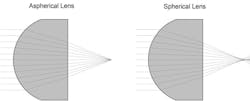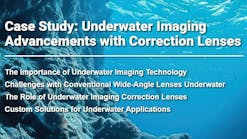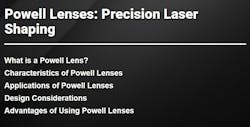At Shanghai Optics we manufacture high quality f-theta lenses for use in laser scanning or engraving systems. These lens systems are carefully designed to provide a precisely engineered barrel distortion that gives a displacement which is linear on angle of incidence of the input beam (theta). Each f-theta scanning lens is actually an array of three to four air spaced components, mounted in sturdy plastic housing. The use of these lens systems eliminates the needs for bulky, complicated electronic correction and enables design of compact scan systems.
Please contact us for our latest prices on stock parts and pre-engineered specifications. Our pre-engineered scan lenses give our customers the option to choose from a variety of preliminary designs based on what suits their application best. Just tell us your application requirements (dimensions, wavelength range, field of view, etc.) and our team of expert engineers will optimize our preliminary designs to meet your exact needs. This will save you the hassle of fully designing a product from scratch and help reduce or eliminate design fees!
Click Here For Our In Stock F-Theta Lenses Page
F-Theta Lens Overview
F-Theta lenses are commonly used in laser scanning systems that require a flat image plane and high resolution. By introducing a specific amount of barrel distortion in the lens, the image height of the F-Theta lens is proportional to the scanning angle. These diffraction limited lens systems can be engineered to produce the desired spot size and have a distortion of less than 0.25% of the entire field of view.
Applications of F-Theta Lenses
F-theta lenses are important in industrial material processing, especially in the drilling, welding, and cutting of synthetic materials. They are also used in biotechnics, specifically in confocal microscopy and ophthalmology.
Optical Characteristics
Operating wavelength, spot size, and scan field diameter (SFD) are key parameters to consider when selecting the ideal f-theta lens for your application.
The scan field diameter is also known as the scan length and can be abbreviated SFD. This is defined to be the diagonal length of the square area in the image plane where the laser beam is focused by the f-theta lens. The SFD of the lens will define deflection and focal length.
The angle between the output beam and the normal of the image plane is called the output scan angle, abbreviated OSA. This angle is not constant across the image field, although the change in OSA is small enough it will not effect scanning applications. For a telecentric lenses, the output scan angle is always zero.
The optical scan angle is the maximum OSA that avoids vignetting.
The spot size in a laser system can be calculated by multiplying a constant (C=1.83 for a Gaussian beam truncated at the 1/e^2 diameter) by the wavelength of the laser and the effective focal length of the lens, divided by the entrance beam diameter. The ability to position the appropriately-sized spot at any point in the flat image plane is crucial to laser scanning, and a good f-theta lens makes this easily attainable. A spot diameter diagram, which indicates the spot diameter variation depending on field position, can be provided on request.
The back working distance (BWD) of a f-theta lens is the distance from the paraxial focus point to the lens housing. The back focal length, or BFL, is the distance from the paraxial focus point to the apex of the lens (the apex of the outer glass element).
At Shanghai Optics our f-theta lenses are carefully designed to minimize the field distortion and curvature, providing a flat image plane. Our factory standard lenses have a max distortion of no more than 0.25%, and provide transmittance of greater than 90 percent. The high quality silica used for our lenses enables a high damage threshold. In stock lenses have focal length options of 63 mm to 645mm, and feature custom optical coatings that are suitable for use in the UV, the visible, and the infrared range. We carry f-theta lenses optimized for 355nm, 532 nm, and 1064 nm wavelengths.
Factory Standards
- Lens design: compact design with 3 to 4 elements
- Transmittance: >90%
- Distortion (Max.): <0.25%
- Focal length: available from 63mm to 635mm
- Custom optical coating: working wavelength range from UV to visible to infrared
- Lens performance: customized to fit specific application needs
Request a free quote from S.O. online, or contact a representative to learn more about our capabilities.





